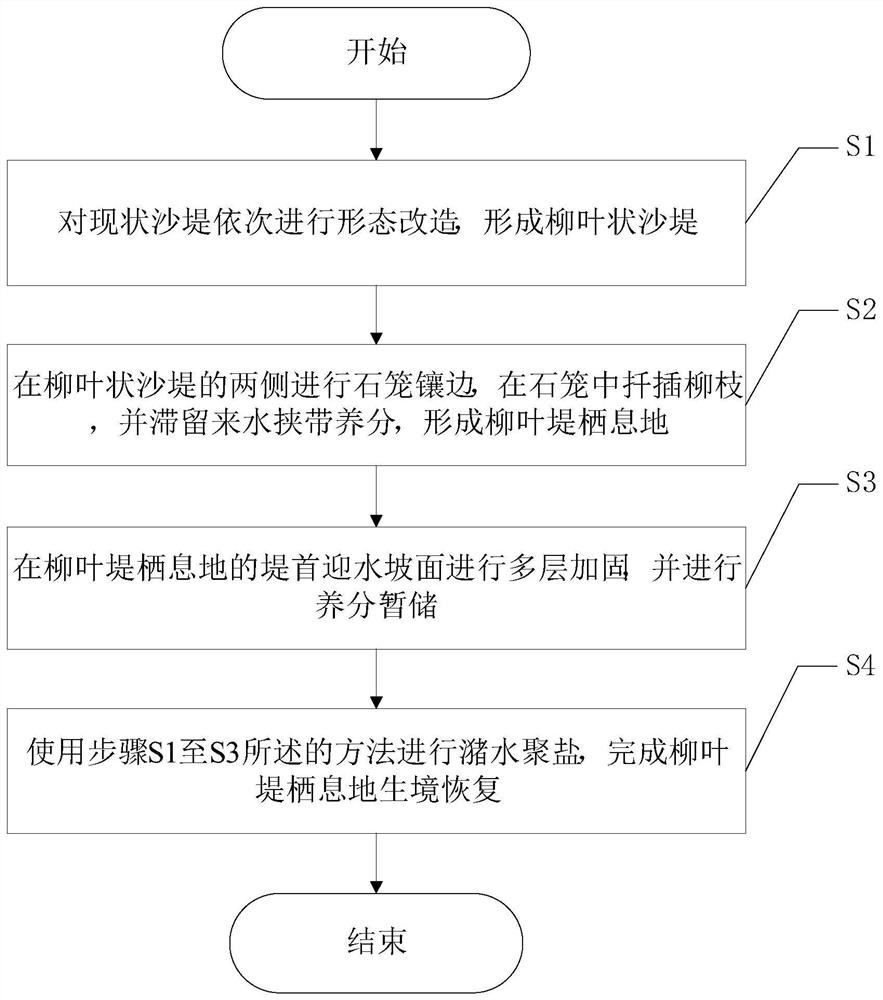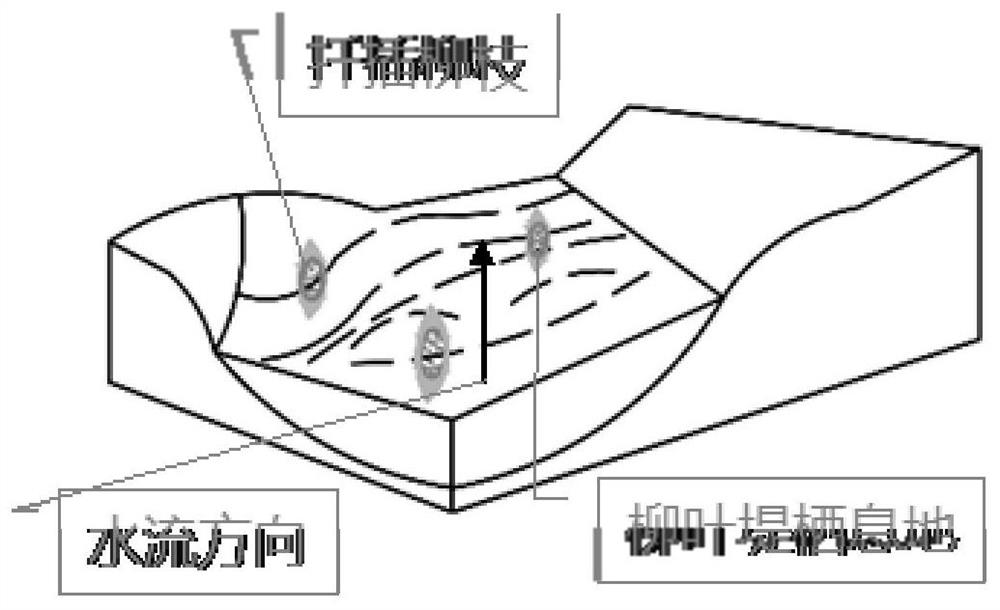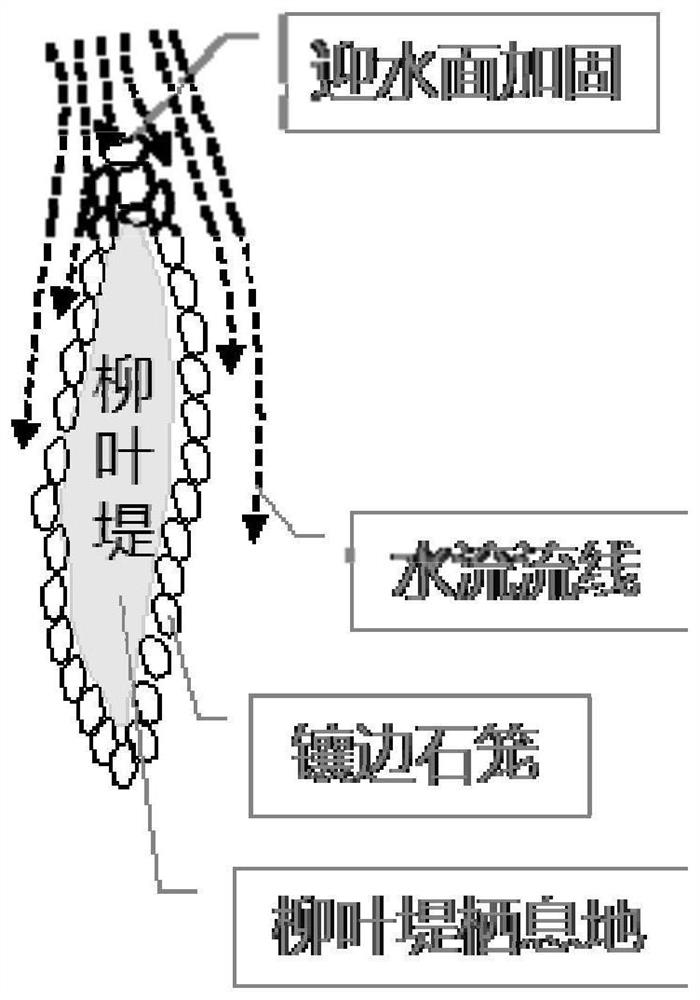Willow-leaf embankment habitat restoration method based on temporary nutrient storage
A restoration method and technology of willow-leaf embankment, applied in the fields of botanical equipment and methods, river regulation, water conservancy projects, etc., can solve the problems of easy collapse of sand embankments, difficult planting of aquatic vegetation, neglect of in-situ reconstruction of sand pits, etc. The effect of strengthening the growth foundation, enriching the ecological landscape, good ecological and social benefits
- Summary
- Abstract
- Description
- Claims
- Application Information
AI Technical Summary
Problems solved by technology
Method used
Image
Examples
Embodiment Construction
[0024] Embodiments of the present invention will be further described below in conjunction with the accompanying drawings.
[0025] Such as figure 1 Shown, the present invention provides a kind of willow embankment habitat habitat restoration method based on temporary nutrient storage, comprising the following steps:
[0026] S1: Transform the current sand embankment in sequence to form a willow leaf-shaped sand embankment;
[0027] S2: Gabion edging is carried out on both sides of the willow-shaped sand embankment, willow branches are cut in the gabion, and incoming water is retained to carry nutrients to form a willow-leaf embankment habitat;
[0028] S3: Multi-layer reinforcement is carried out on the water-facing slope at the head of the willow embankment, and temporary storage of nutrients is carried out;
[0029] S4: Use the method described in steps S1 to S3 to carry out water retention and salt accumulation, and complete the habitat restoration of the willow bank hab...
PUM
 Login to View More
Login to View More Abstract
Description
Claims
Application Information
 Login to View More
Login to View More - R&D
- Intellectual Property
- Life Sciences
- Materials
- Tech Scout
- Unparalleled Data Quality
- Higher Quality Content
- 60% Fewer Hallucinations
Browse by: Latest US Patents, China's latest patents, Technical Efficacy Thesaurus, Application Domain, Technology Topic, Popular Technical Reports.
© 2025 PatSnap. All rights reserved.Legal|Privacy policy|Modern Slavery Act Transparency Statement|Sitemap|About US| Contact US: help@patsnap.com



